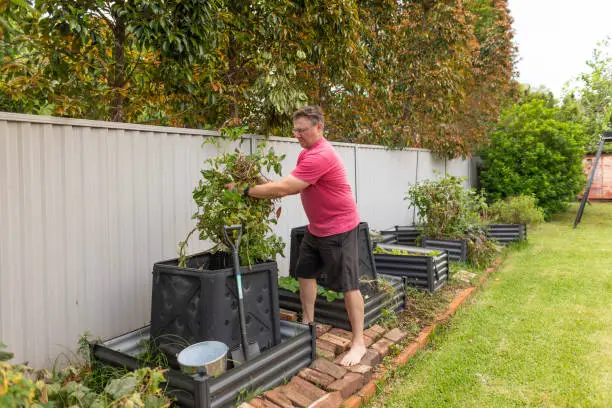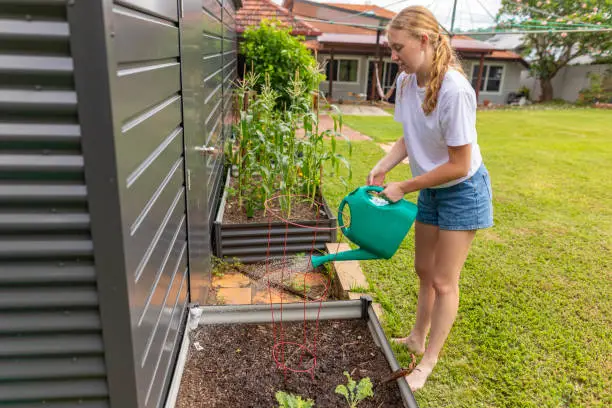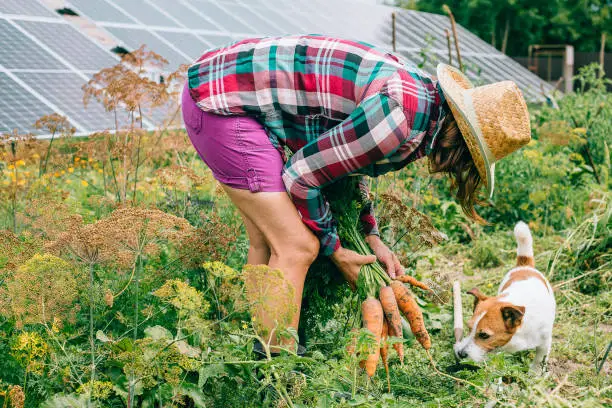Pond Design and Construction for Irrigation and Wildlife: A Complete Guide for Backyard Homesteaders
The backyard homesteading goes beyond aesthetics and water feature fantasies to create a pond. It supports irrigation, biodiversity, and animals as part of a sustainable plan. Legal requirements and ecological implications must be considered when building such a structure, requiring meticulous attention to detail and respect for nature.

First, understand the legal foundation for pond construction. Regions have different water rights, permits, and environmental evaluation regulations. Early consultation with local authorities and environmental organizations can help ensure your project meets local and national environmental standards.
The first planning phase requires a detailed site study. The placement should consider soil composition, vegetation, topography, and pond size. Low-permeability clay soils are suitable for pond construction because they retain water. Liners may be needed to reduce water loss in sandy or gravelly soils.
Another crucial step is water source selection. Spring, stream, rainfall catchment, and municipal water sources are options. Each source has its concerns, from water sustainability to contamination. Natural sources may need further filtering to assure water purity, while rainfall requires a catchment-efficient design.
Pond depth, shape, and edge treatments are further explored in design. A depth gradient can create microhabitats for various plants and animals in the pond ecology. Shallow areas support aquatic plants, which oxygenate and purify water, while deeper zones shelter fish and amphibians. The pond’s shape, influenced by aesthetics and practicality, should make upkeep easy and blend with the land.
Edge therapy should also be considered. Gradual slopes or terraced borders can improve wildlife access, enhancing the pond’s habitat role. Native vegetation around the pond stabilizes the soil and filters runoff, reducing pollution.
Pond liners, whether constructed of PVC or clay, prevent water seepage. Soil type, money, and environment affect liner choice. Clay liners are laborious to install but blend into the landscape, while synthetic liners are durable and flexible.
Adding aeration systems can improve the pond ecosystem. Aeration circulates oxygen in the water, supporting aquatic life and breaking down organic materials. Mechanical aerators, fountains, and strategically placed plants oxygenate water naturally.
Water management includes maintenance after construction. Monitoring water quality factors, including pH, temperature, and nutrient levels, is crucial to identifying and correcting imbalances. Invasive vegetation and fauna must be removed to maintain pond ecosystem health and diversity. Seasonal upkeep, like cleaning waste and cutting vegetation, improves the pond’s ecology and aesthetics.
Wildlife-friendly elements like floating islands for bird nesting and underwater structures for fish habitat increase the pond’s biodiversity. These features provide wildlife refuges, creating a diverse ecology.
These efforts result in a backyard homestead pond with various uses. Saving water for irrigation sustains crops and gardens during dry seasons. The pond becomes vibrant, drawing birds, insects, amphibians, and fish, contributing to life’s complex web.
Backyard homesteading involves designing and creating a wildlife and irrigation pond. It is a symbol of stewardship that nurtures the land and its inhabitants by balancing human demands with natural rhythms. A well-planned, executed, and maintained pond enhances the homestead and the biological community, creating a tapestry of life in the backyard.
Utilizing Nature’s Gift: Swales for Water Efficiency in Backyard Homesteading
In backyard homesteading, we often uncover and adapt traditional traditions that blend with nature to achieve sustainability and efficiency. Swales are an excellent example of water management inventiveness. Swales, shallow trenches created along the land’s contour, absorb, delay, and permeate rainwater runoff, turning flooding into plant and tree hydration. It conserves water, improves soil fertility, promotes biodiversity, and lowers erosion, following permaculture principles of cooperating with nature.
Swale building projects start with observation and planning, which cannot be hastened. Walk the area after or during rain to see how water flows and where it collects. Swales are placed based on these data and topography. The idea is to capture water runoff before it erodes and direct it to favorable locations.
Understanding land contours is crucial for swale placement. V contour lines define swales, which are found using essential tools or advanced electronic devices. Building swales along these lines guarantees that water is caught and distributed uniformly throughout the terrain because they are at equal elevations.
Swales vary in size and depth depending on the area’s demands. Swales range from a few feet wide and deep for backyard homesteads to bigger ones on larger lots. Using excavated dirt as a planting bed, swale downhill sides often include berms. This berm can be planted with grasses, groundcovers, shrubs, and trees to stabilize the soil and increase water infiltration.
Swales work by mimicking natural water cycles to recharge groundwater and reduce irrigation. Swales reduce runoff, allowing water to soak into the soil and recharge aquifers. This procedure conserves and filters water, improving groundwater quality and minimizing pollution.
Organic materials in the berm and swale bottom increase water retention. Compost, mulch, and other organic components boost soil structure, porosity, and microorganism growth. These creatures replenish the soil and foster a healthy swale ecosystem by cycling nutrients.
The efficiency and aesthetics of the swale and berm depend on the plants used. Native plants are recommended because they adapt to local conditions, especially water regimes. Deep-rooted species can penetrate compacted subsoil, increasing soil structure and water penetration. A diverse plant community attracts beneficial insects, birds, and wildlife, creating a dynamic and resilient ecosystem.
Swanes require minimum maintenance but are vital to their success. It involves checking for and fixing erosion, especially after severe rains, and maintaining healthy vegetation for water penetration. Organic matter in the swale decomposes, requiring periodic replenishment to maintain soil fertility and water-holding ability.
Swales can be used with rain gardens, ponds, and rainwater harvesting systems to create a complete homestead water management plan. This integration improves water efficiency and landscape resilience to drought and extreme weather.
Swales are beautiful beyond their primary use, providing a canvas for landscape art. Rocks, logs, and plants can create attractive, ecologically essential features.
Swales change backyard homesteads beyond measure. They create lush, productive landscapes that flourish under water scarcity by catching and infiltrating rainwater. They demonstrate how following nature’s cycles may lead to plentiful and sustainable living using permaculture concepts.






Leave a Reply